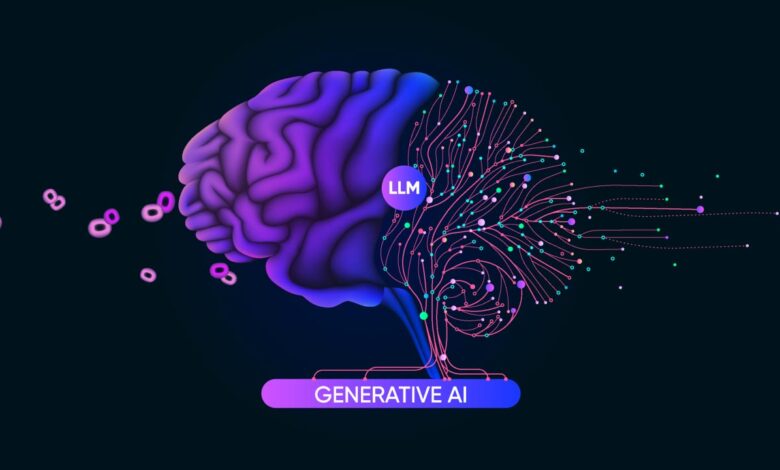
Artificial intelligence (AI) has achieved remarkable advancements over the past few years, with large language models (LLMs) showing promise as a game-changing innovation. LLMs like GPT-3.5 and GPT-4 have demonstrated an unprecedented ability to understand and generate human-like text, opening new possibilities for every type of industry.
When it comes to cybersecurity, AI can play a key role in protecting digital assets and infrastructures. In fact, LLMs may represent the future of cybersecurity, particularly in this day and age of cyber threats which are increasingly pervasive and sophisticated.
The History of Language Models
Language model development has undergone remarkable transformations from the early days. Prior models, such as n-grams, relied on basic statistical methods to generate text based on word sequence probability. With advances in machine learning techniques, improved models such as recurrent neural networks (RNNs) and long short-term memory (LSTM) networks emerged to offer better contextual understanding and text generation capabilities.
However, the turning point in natural language processing (NLP) arrived with the introduction of transformer architectures. This provided OpenAI’s popular GPT (Generative Pre-trained Transformer) series that has significantly advanced the capabilities of language models. These models, due their ability to be trained on vast amounts of data, generate highly coherent and contextually relevant text.
LLMs such as GPT-4 have demonstrated significant progress in understanding and generating text that closely resembles human language. These models can capture context, comprehend nuances, and even exhibit a certain degree of creativity, paving the way for a wide variety of applications in multiple industries. The key factors that facilitate these advancements include:
Larger training datasets – Modern language models are trained on massive amounts of text data, which enables them to learn patterns, grammar, and context more effectively.
More powerful architectures – Newer transformer-based models can capture long-range dependencies and context, leading to improved text generation and understanding.
Advanced training techniques – Improvements in training methods, such as transfer learning and unsupervised learning, enable development of more robust and versatile language models.
These improvements have allowed LLMs to excel at various NLP tasks, including sentiment analysis, text classification, summarization, and translation.
Large Language Model Applications in Cybersecurity
LLMs have shown promise in enhancing various aspects of cybersecurity. AI-driven language models can streamline processes, improve accuracy, and support human experts for functions ranging from threat detection to security awareness training to data security posture management (DSPM). Notable applications of LLMs in cybersecurity include:
Threat detection and response – LLMs can analyze and process massive amounts of data, including threat intelligence feeds and logs, to identify suspicious patterns and potential threats. By automating the analysis of this data, these models can help security teams respond to incidents more quickly and effectively.
Data security – LLMs can help understand data with context, enabling enterprises to inventory and understand where their sensitive data is and to identify risks to that data. By analyzing data at scale, these models can help IT teams discover, monitor, and protect their mission-critical data.
Automated vulnerability assessment – AI-driven language models can automatically scan networks and spot potential vulnerabilities, such as open ports or unpatched software.
Secure code analysis and recommendations – LLMs can be used to analyze code repositories for possible security issues and recommend best practices for secure coding. By learning from past vulnerabilities and coding patterns, these models can suggest improvements to help prevent future security incidents.
Phishing detection and prevention – Phishing attacks typically rely on manipulating language to deceive victims. LLMs can recognize phishing attempts in emails, social media messages, or other communication channels, helping to prevent successful attacks and protect private information.
Security awareness and training – LLMs can generate realistic simulations and scenarios for security awareness training. By providing personalized and engaging content, they can help improve employees’ understanding of cybersecurity risks and best practices, ultimately strengthening an organization’s overall security posture.
How AI Can Help Companies Protect Sensitive Data
With today’s cloud migration and adoption, companies generate and process vast amounts of sensitive information. Therefore, maintaining a robust security posture is increasingly important to ensuring the confidentiality, integrity, and availability of their digital assets.
LLMs like GPT can be crucial in improving a company’s data security posture management (DSPM). By leveraging the power of advanced AI-driven language models, companies can better understand and manage their data security requirements to reduce the risk of data breaches and other cyber threats.
A very significant benefit of LLMs in data security is automating the analysis and categorization of sensitive data. LLMs can efficiently process and classify data based on its level of sensitivity, enabling organizations to prioritize protection of their most valuable and sensitive information. By identifying and classifying sensitive data, organizations can implement appropriate security measures and controls to ensure their security posture aligns with the specific requirements of each data category.
In addition, LLMs can be used for creating, reviewing, and updating security policies and procedures, ensuring compliance with relevant regulations and adherence to industry best practices. With AI, organizations can maintain up-to-date policies with greater accuracy and consistency, ultimately improving their overall security posture.
ChatGPT’s Impact in Cybersecurity
The increasing adoption of ChatGPT can be attributed to its versatility, ease of integration, and effectiveness in handling a variety of tasks. Its ability to understand context, generate coherent responses, and adapt to different domains has made it an attractive tool for businesses and developers.
ChatGPT also shows promise for the cybersecurity industry, offering advantages that include:
Incident response and triage – ChatGPT can assist security teams by automating the initial stages of incident response, including gathering information, prioritizing incidents, and delivering preliminary analysis. This allows teams to focus on more complex tasks, improving efficiency and reducing response times.
Security policy management – ChatGPT can generate and review security policies, ensuring they comply with relevant regulations and adhere to industry best practices. By automating this process, organizations can maintain up-to-date policies with greater accuracy and consistency.
Enhancing SOC efficiency – ChatGPT can support security operations center (SOC) teams by automating routine tasks, including log analysis, threat hunting, and communication with stakeholders. This can free up time and resources for SOC analysts to focus on more strategic and complex tasks.
Limitations and Challenges of LLMs in Cybersecurity
While LLMs like ChatGPT show great potential in enhancing cybersecurity, they also come with their own set of limitations and challenges. Overcoming these concerns is crucial for realizing the full promise of AI-driven technologies.
Addressing ethical concerns and biases – Language models are trained on vast amounts of data from the internet, which may contain misinformation, biases, or offensive content. As a result, these models can inadvertently generate biased or harmful outputs. Developers must invest in improving the training process, implementing mechanisms to filter out biased content and prioritizing ethical considerations.
Ensuring security and data privacy – LLMs can sometimes inadvertently reveal sensitive or private information contained in the training data. Therefore, it is essential to establish robust data processing and privacy-preserving techniques during the development and deployment of these models.
Balancing human expertise with automation – Despite their advanced capabilities, LLMs cannot be considered a replacement for human expertise in cybersecurity. It is crucial to find the right balance between automation and human intervention, ensuring that AI-driven solutions are used to support, rather than replace, human experts in detecting, analyzing, and responding to threats.
In addition, we must understand that many of the tools AI brings to cybersecurity can be used against us by bad actors. If defenders and attackers are both leveraging AI, the one with the most resources probably prevails. Whoever has more money, time, and AI tools to process the data will be successful. However, the good news is that as AI becomes more commoditized, the resources required to harness it diminish.
The Future of LLMs in Cybersecurity
As LLMs continue to improve and evolve, their potential applications in cybersecurity are expected to grow in both impact and scope. We can look forward to some of the following:
Continuous improvement of language models – The continuous development and refinement of LLMs will lead to better performance in natural language understanding and generation. LLMs can be leveraged for more accurate threat detection, improved secure code analysis, and more efficient security operations.
Integration with other AI technologies – The combination of LLMs with other AI-driven technologies, including anomaly detection, computer vision, and machine learning algorithms, will lead to more comprehensive and robust cybersecurity solutions.
Emergence of new cybersecurity applications – As LLMs become more advanced, we can expect the emergence of new applications in cybersecurity. For example, AI-driven language models could create more sophisticated and adaptive phishing detection systems, generate realistic threat simulations for training purposes, and improve existing solutions that address DSPM.
Advancements in LLMs clearly represent a significant opportunity for the cybersecurity industry. By staying ahead of these developments and adapting them to address cybersecurity challenges, organizations will be in a better position to protect their digital assets and infrastructures.




